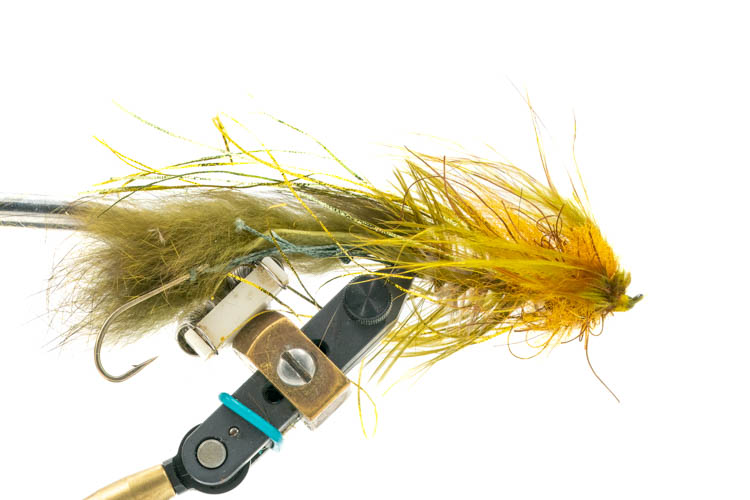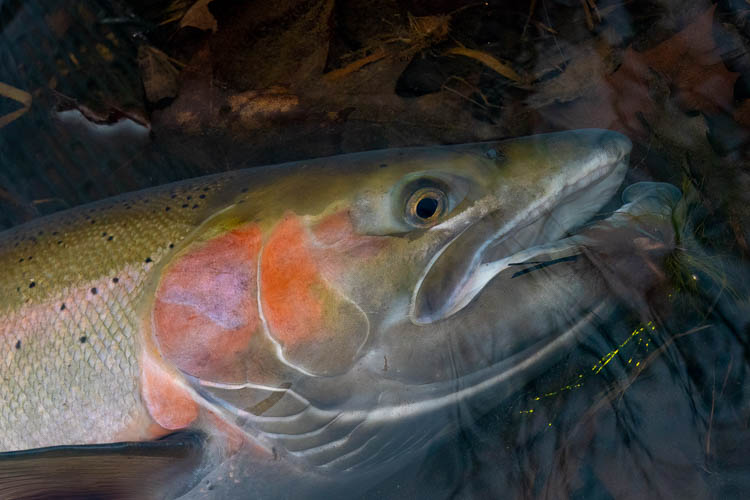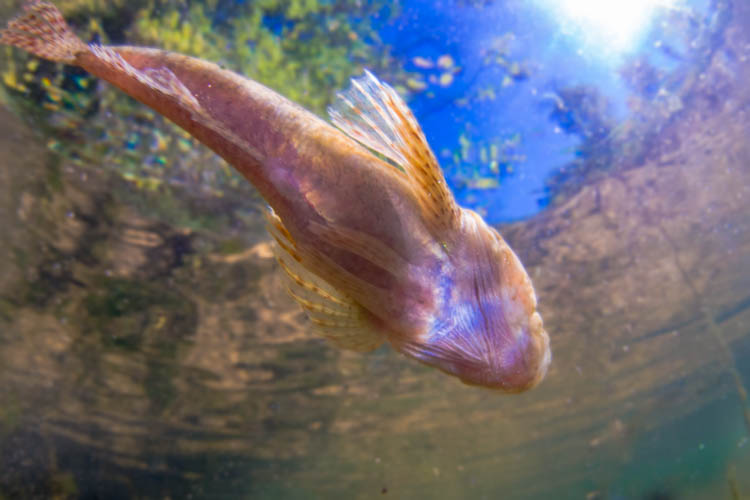Fly Pattern: The Toadbreaker Sculpin

Regular visitors to this site mentioned to me that they would like to see an updated pattern on this page. So, the codebreaker pattern was replaced by a bigger, more menacing fly, the toadbreaker sculpin.
There are some years when we don’t use very many large sculpin patterns. This is especially true when our fish are running on the small side. On those years, we would lean toward smaller baitfish patterns or attractors during the winter. We are still using those with smaller flies in many situations, but large flies have their place too.
On years when we have a run of plus sized steelhead, a more beefy pattern can really get the job done. We have moderate numbers, but large fish this year. This is a perfect scenario for this sculpin pattern. It can attract fish from distance by moving water, while still appealing to larger fish due to its size.
Many years ago, when I was just starting to learn to swing flies, one of the first flies that I really did well with I called an emulator. This is really an updated and improved version of the emulator; it is tied on a shank, and contains some really buggy materials. It also has some light green and yellow flash, which exaggerates natural colors the natural colors of a sculpin.

Here is the recipe for the toadbreaker sculpin:
Shank: A long up eye shank, typically 50mm or more
Loop: Braid or wire of your choice. Since I am typically tying this fly in large sizes, the trailing hooks are a little larger. Thus I lean toward heavy 80lb. braid on my own flies.
Eyes: Bead Chain, tied 1/3 of the way down from the eyes
Tail: Olive, tan, or brown rabbit strip
Hackle: Large brown or olive schlappen feather
Body: Natural emu feather
Flash: I use Chartreuse Fire Tye, and gold Fire Tye. In addition, I often add some UV blue ripple fiber or UV gray crystal flash
Head: Brown, Olive, or Yellow Kraken Dubbing. This is a great material for tying any pattern that you want to make large and buggy.
Front Hackle: Brown barred Olive Marabou
Here are some tying instructions for the Toadbreaker sculpin:
- Cover the Shank with Thread.
- Move the thread 1/3 the way back from the eye
- Tie in a pair of bead chain eyes or lead eyes under the hook.
- Tie in your loop. If you are using braid, it is recommended that you tie an overhand knot in it toward the tag end. This will keep the fly from self destructing if you get a violent strike. Make sure that you cover the whole shank with thread in the process. It is a good idea to add a drop of zap a gap or other quick drying glue at this point.
- Tie in a tail of 1-2″ of rabbit strip at the very back of the shank.
- Tie in a schlappen feather by the tip at the same point as the rabbit strip.
- Tie in a natural emu feather by the tip at the same point as the rabbit strip.
- Wind the emu feather forward to the eyes in a tight spiral.
- Now wind the Schlappen feather through the emu, leaving spaces in the spiral as you wind it forward.
- Just in front of the eyes, tie in a few strands of yellow and a few strands of chartreuse flash.
- Move the thread a little bit in front of the eyes, and tie in a clump of Kraken dubbing, forming a bulky and unruly head.
- Take a marabou feather, and strip one half of the feather. Take the marabou fibers that were just stripped, and move your fingers to the middle point of the fibers. Tie these in just in front of the clump of dubbing. This will form a small veil over the head of the fly.
- Finish the fly.

The secret to any good sculpin pattern is in crafting a good head for the fly for the conditions you are fishing. In many sculpin patterns that we use, Australian possum is the key to getting the fly to push water. This possum is a great material, especially for fishing in the fall. However, when the water gets cold, it is more difficult to sink. Synthetic materials like dubbing are easier to get to the bottom of the water column.

Sculpins are teardrop shaped. They are big at the front and thin at the rear. Any good sculpin pattern should reflect this shape.
If you enjoyed this sculpin pattern, or are seeking other flies that have been previous displayed here, please visit our patterns page. For a book that shows a lot about fishing baitfish patterns, check out Kevin Feenstra’s Matching Baitfish.
